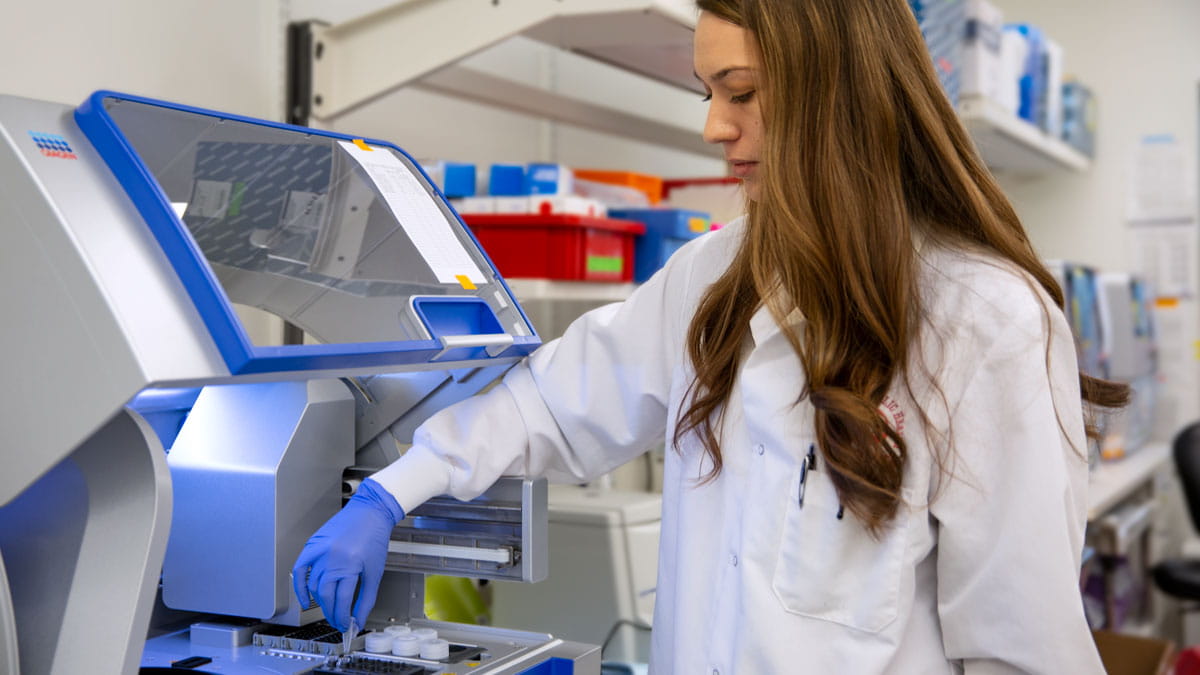Test pilots for dPCR
They partnered with the Delaware Department of Natural Resources and Environmental Control (DNREC), a state agency that has the authority to collect samples from wastewater treatment plants. Of the 31 publicly-owned wastewater systems in the state, DPHL receives samples from 13 of them twice a week.
Then DPHL joined the QIAGEN pilot program in 2021. “The QIAGEN pilot program was an opportunity to be a part of a program that established a whole automated method from extraction to plating the master mix to transferring to plates,” she says. DPHL uses three QIAGEN instruments in this process. The QIAcube Connect does the extraction, the QIAgility plates the master mix and samples, and the QIAcuity runs the digital PCR experiment. Its nanoplate technology partitions the sample into 26,000 individual reactions, increasing the chances of identifying a single positive.
Moore is one of the primary DPHL scientists operating the QIAcuity. “At first it was difficult because not a lot of public health labs knew anything about wastewater testing,” she admits. “So it was a challenge at first bringing up a new method. But the instrument is very user-friendly, and the software is very intuitive. We were trained on it and able to pick it up pretty quickly.”
Wastewater samples can be complex to work with. “As you can imagine, there's a lot of other things in wastewater samples besides SARS-CoV-2, so a lot of the issues have to do with being able to work around that, with inhibitory factors,” she says. “Some samples come with a bit more sludge than others adding to the likelihood of interfering substances.”
Another challenge has been finding which concentration method works best for their purposes. “We were doing PEG precipitation, which goes through a centrifugation process, but it is time consuming (taking most of the day),” Moore says. “It also requires a lot of centrifuges, which took up a lot of space. We recently just switched to a different concentration method that can concentrate our samples within about four minutes. That time difference really helps quite a bit now that we're getting a lot more samples than we were at the beginning.” At first, they were processing two samples a week, but that’s grown to 26.



